
Layering Techniques for Beautiful Concrete with Acid Stains: Wet on Wet vs. Wet on Dry
By Crystal & Jonathan
March 2021 – $150 Winner
Crystal and Jonathan were looking to improve the appearance of their home, so they turned to EverStain acid stain from Direct Colors. They used the product to stain the concrete of their entire downstairs living space. Prior to using EverStain, they had tried a generic water-based stain, but were not happy with the outcome. However, after researching their options, they decided to give EverStain a try and selected the Malayan Buff, Cola, and Seagrass colors. They were thrilled with the results, saying that the final look was “absolutely beautiful and exactly what we wanted.”

Blending acid stain colors on concrete is a creative and fun way to add interest and character to your concrete surfaces. Whether you want a dreamy, washed out look or a vibrant, psychedelic finish, layering, blending, or applying acid stain colors to the same concrete slab can give you a wide range of effects. The key to achieving the desired result is to consider the state of the previous layer of acid stain when you apply the next color. If the previous layer is dry, you’ll get a more distinct border between colors. If it’s partially dry, the border will be less defined. And if the previous layer is still wet, the colors will blend together more seamlessly. Experiment with different techniques and see what works best for your project.
Wet on Wet Acid Stain Layering
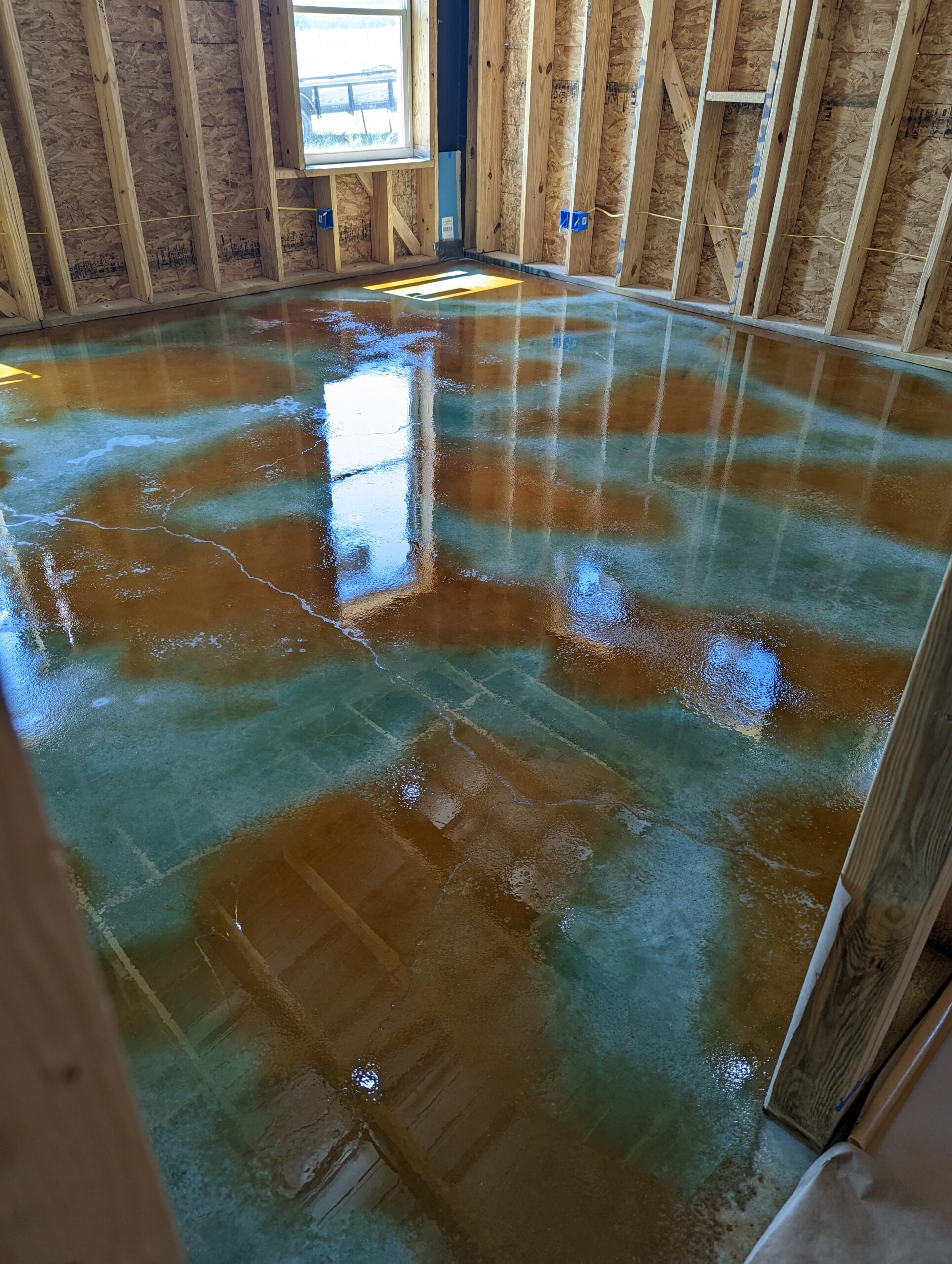
Wet on wet acid stain layering is a technique that involves applying multiple coats of your chosen acid stain color(s) to the same surface while the previous layer is still wet. This allows the colors to blend together in a way that creates a unique, marbled finish that is characteristic of acid staining. You can also use this method by applying one base color at different dilution ratios to create a range of shades.
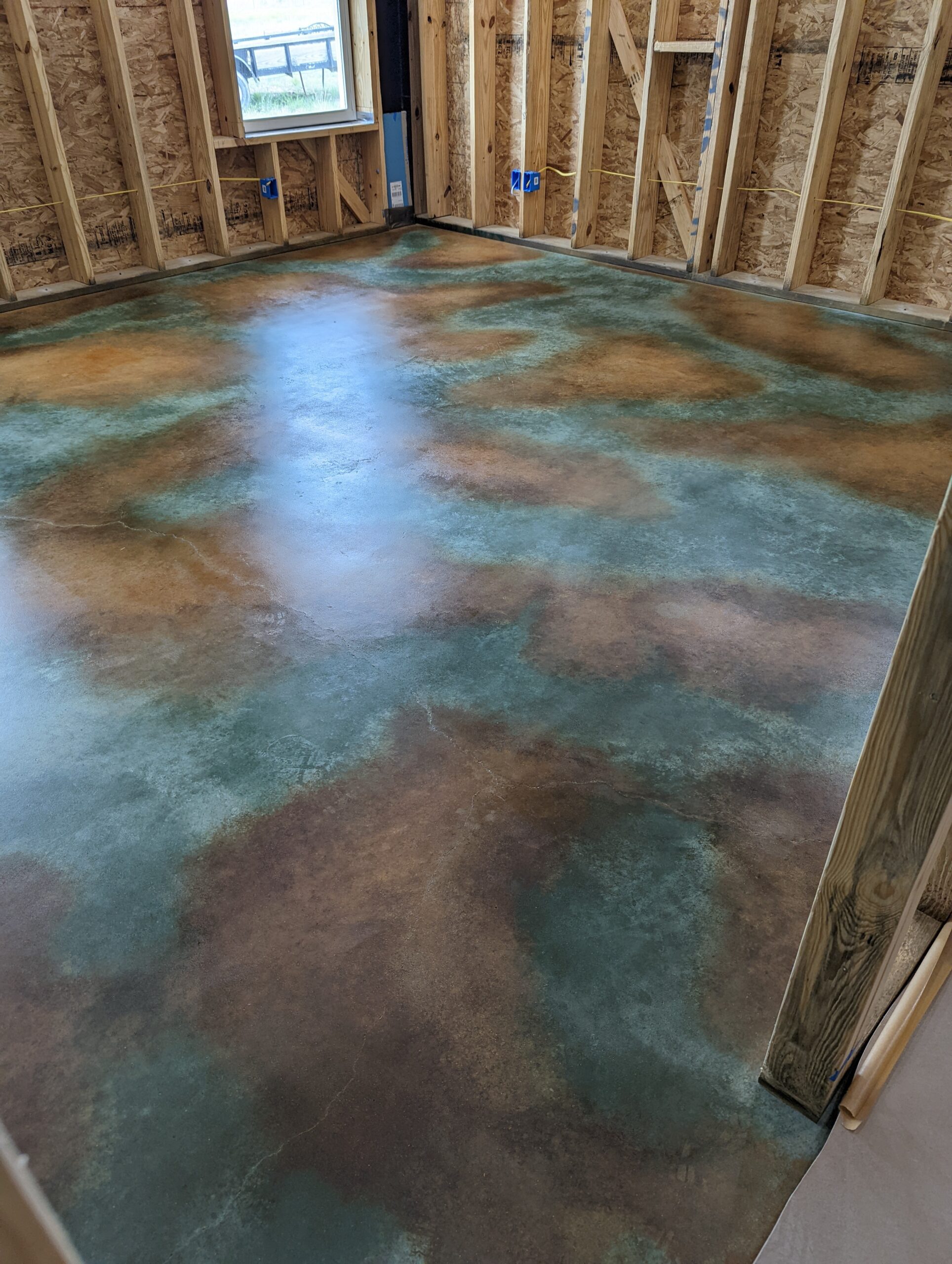
One of the benefits of the wet on wet method is that there is no need to wait for each layer to dry before applying the next one, which can save time and give you more control over the final result. Just be aware that, similar to watercolor paints, acid stains will bleed into each other in the presence of water, so the edges between contrasting colors will be softer and less defined. This can be a desirable effect, but it’s important to keep it in mind as you work.
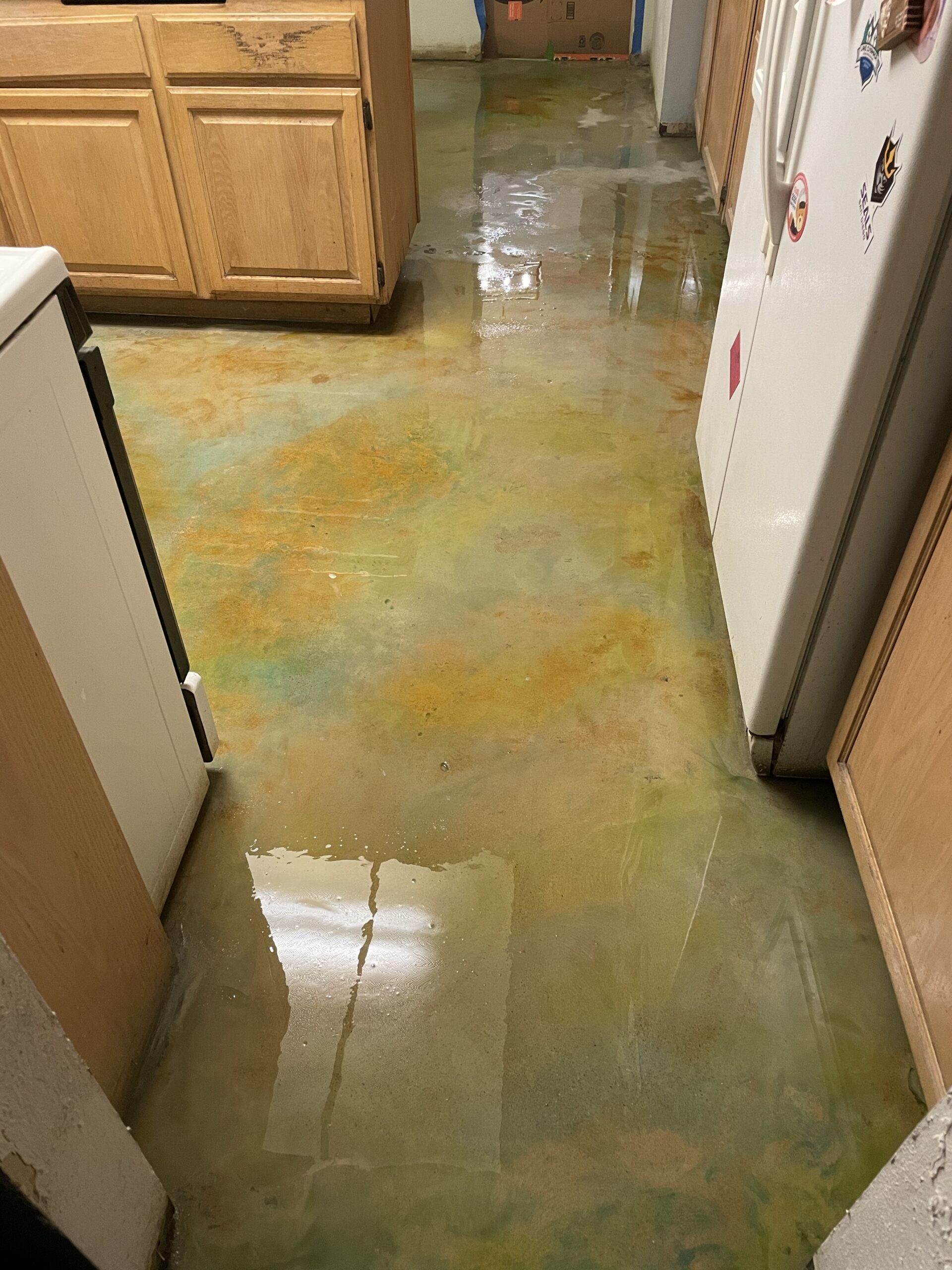
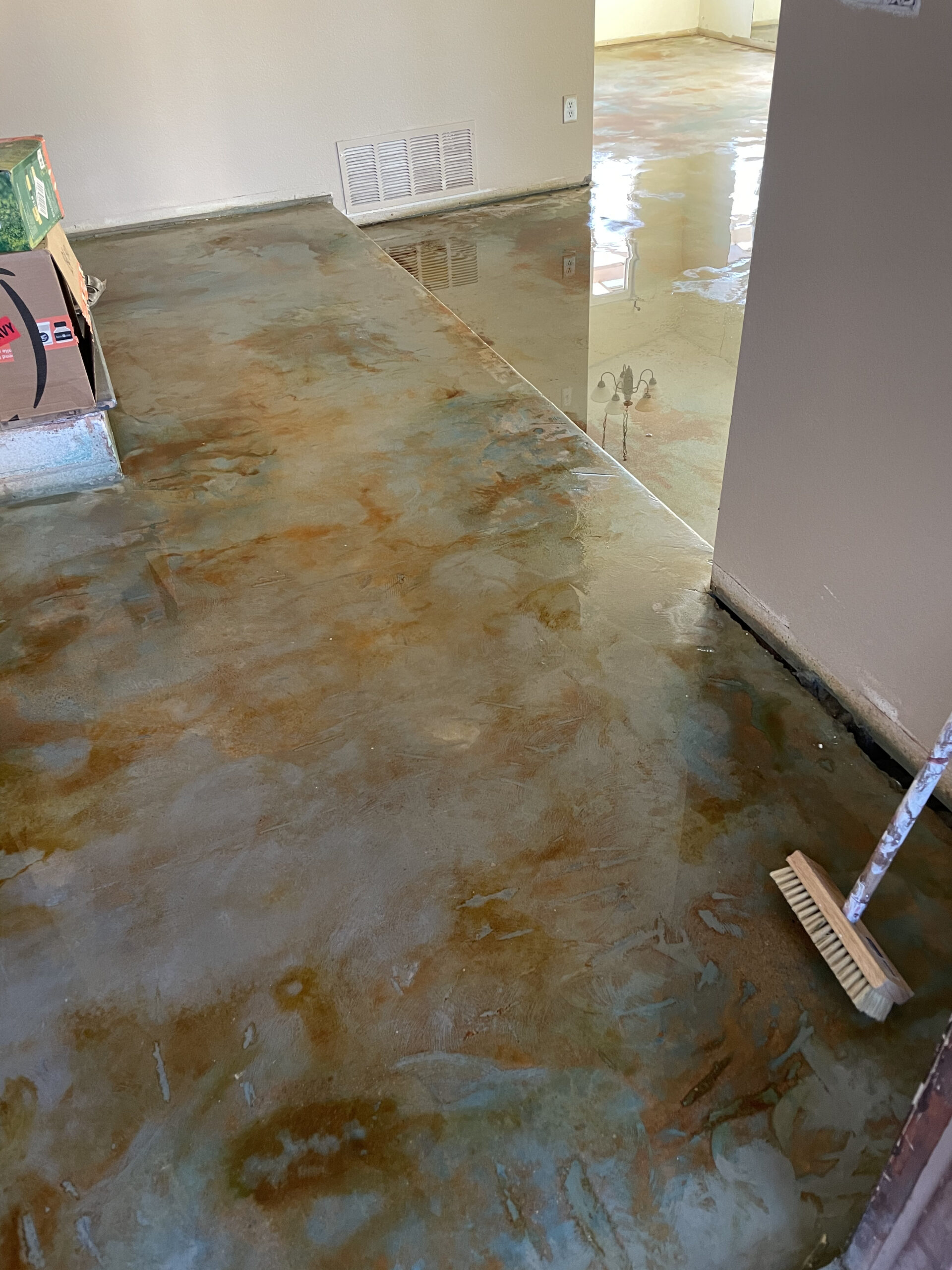
When using the wet on wet layering technique, it’s important to consider the order in which you apply the different colors of acid stain. To preserve the distinction between light and dark tones, it’s generally best to start with the lighter color and then follow up with each darker color. This will help prevent the dark stains from overpowering the lighter areas when blending. However, it’s also important to be mindful of the overall balance of the colors and make adjustments as needed to achieve the desired effect. With practice, you’ll be able to achieve a wide range of looks by layering and blending acid stain colors in different ways.
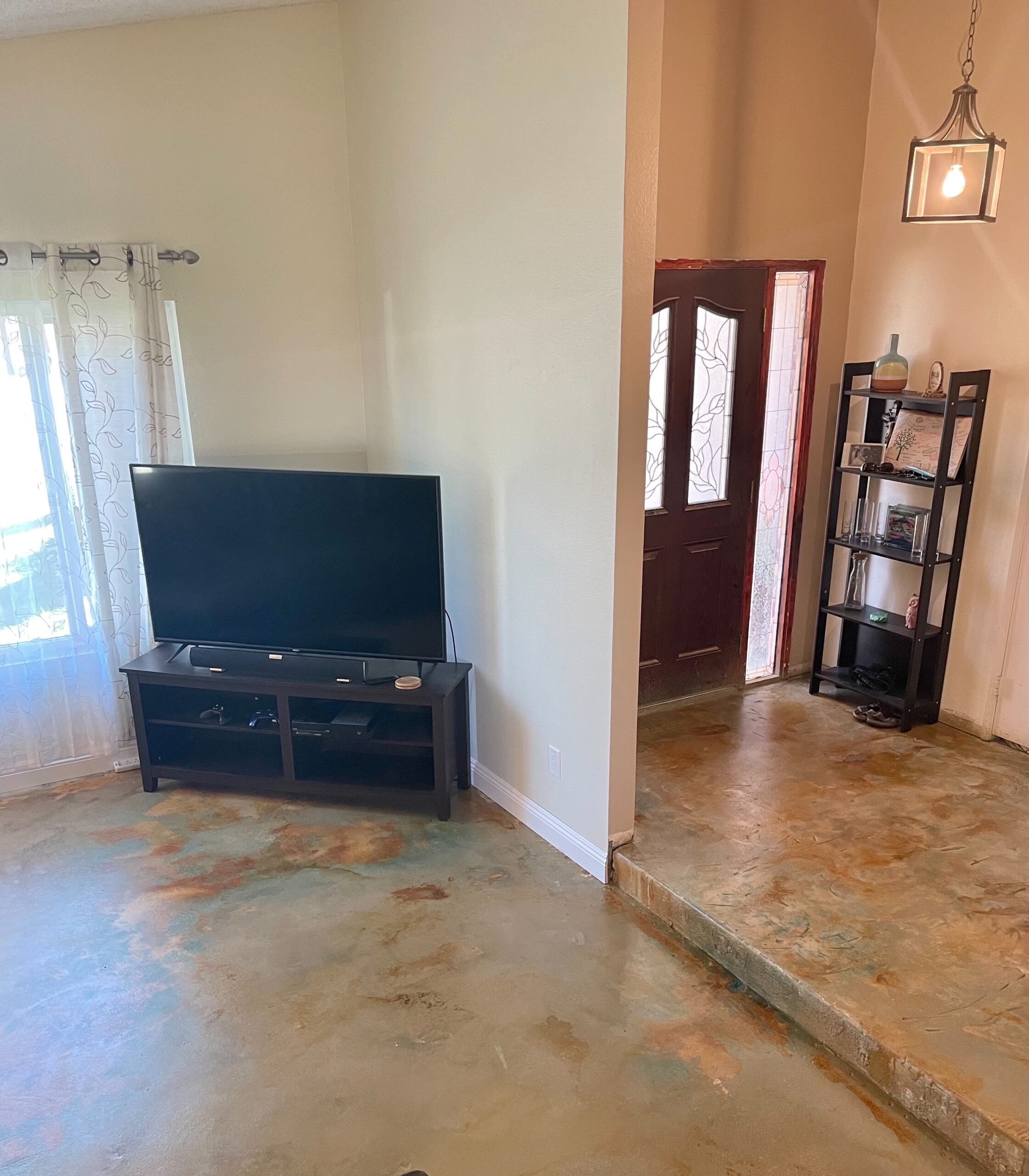
Crystal and Jonathan also mentioned that they were working with a 40+-year-old slab when they used EverStain acid stain on their concrete. They were aware that the acid would change the concrete in different and unexpected ways, so they kept this in mind as they worked. It’s always a good idea to be mindful of the age and condition of the concrete surface when using acid stain, as it can affect the final appearance of the project. By understanding the characteristics of your specific slab, you can better predict the end result and make any necessary adjustments to achieve the look you desire.

Crystal and Jonathan were pleased with the overall result of their acid staining project, and they even appreciated the imperfections in the concrete that contributed to the character of the final product. It’s important to remember that acid stain is a reactive product that reacts with the minerals in the concrete to create a unique, mottled finish. This means that every project will be slightly different, and the final look may include variations in color, texture, and overall appearance. Embracing these imperfections can add interest and charm to the finished surface, and can even make it feel more authentic and organic.
Create Marbled Effects with Wet On Wet Layering using a Spray Bottle for Acid Stain Application

Using a spray bottle to apply acid stain can help you create marbled effects through the wet on wet layering technique. By applying multiple coats of acid stain while the previous layer is still wet, you can achieve a unique, marbled finish that is characteristic of acid staining. The spray bottle allows you to apply the acid stain in a more controlled and precise manner, making it easier to achieve the desired level of blending and layering. For larger surfaces, a pump sprayer may be a more practical option. Experiment with different techniques and see what works best for your project.
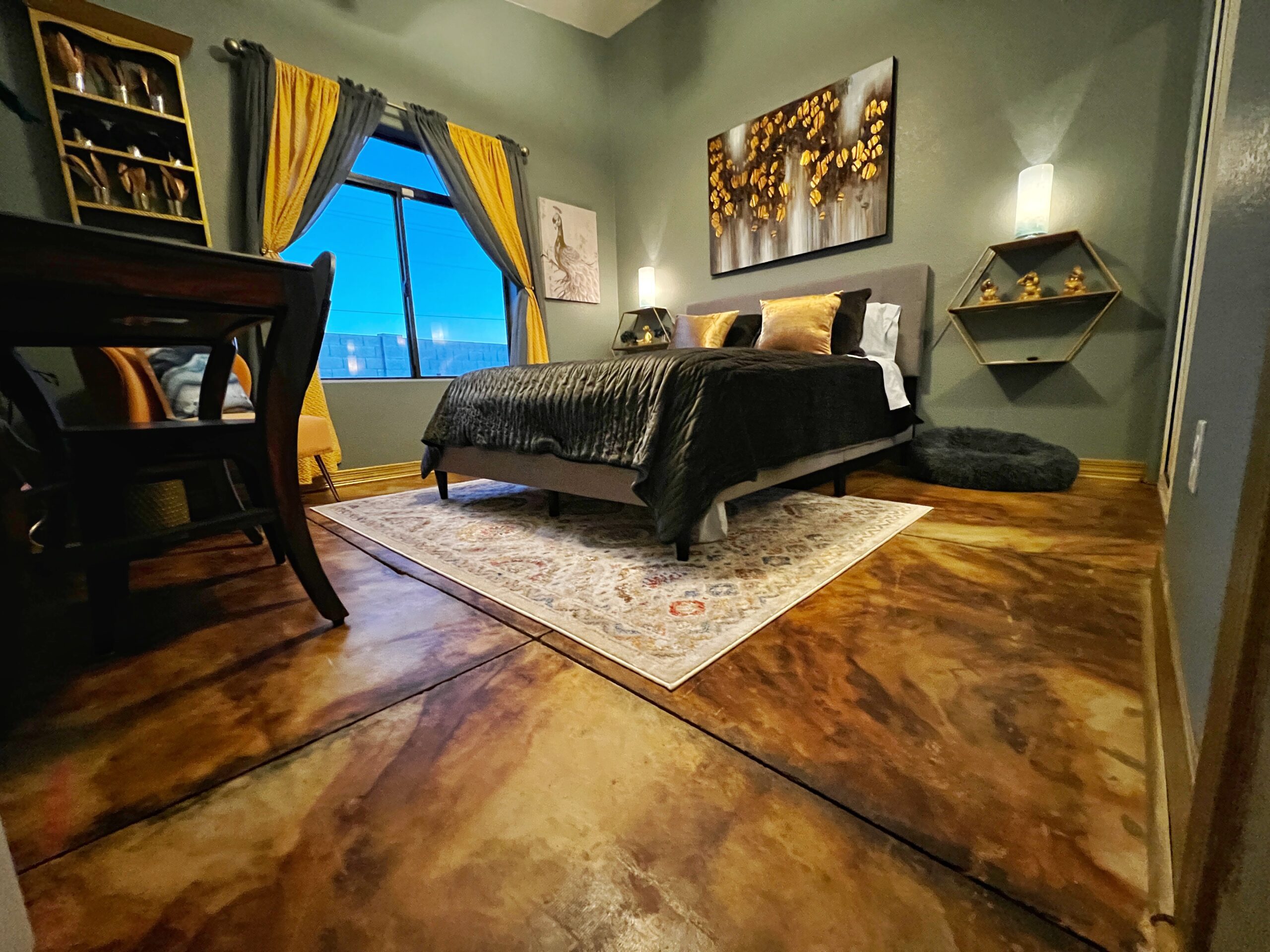
Wet on Dry Acid Stain Layering
The wet on dry acid stain layering technique involves applying multiple layers of acid stain to the same surface, with each layer allowed to dry completely before the next one is applied. This approach requires a minimum drying time of at least five hours between each layer, depending on the weather and humidity conditions. The advantage of using the wet on dry technique is that it produces well-defined borders between the different colors of acid stain, which can be useful if you’re trying to create a specific pattern or design.
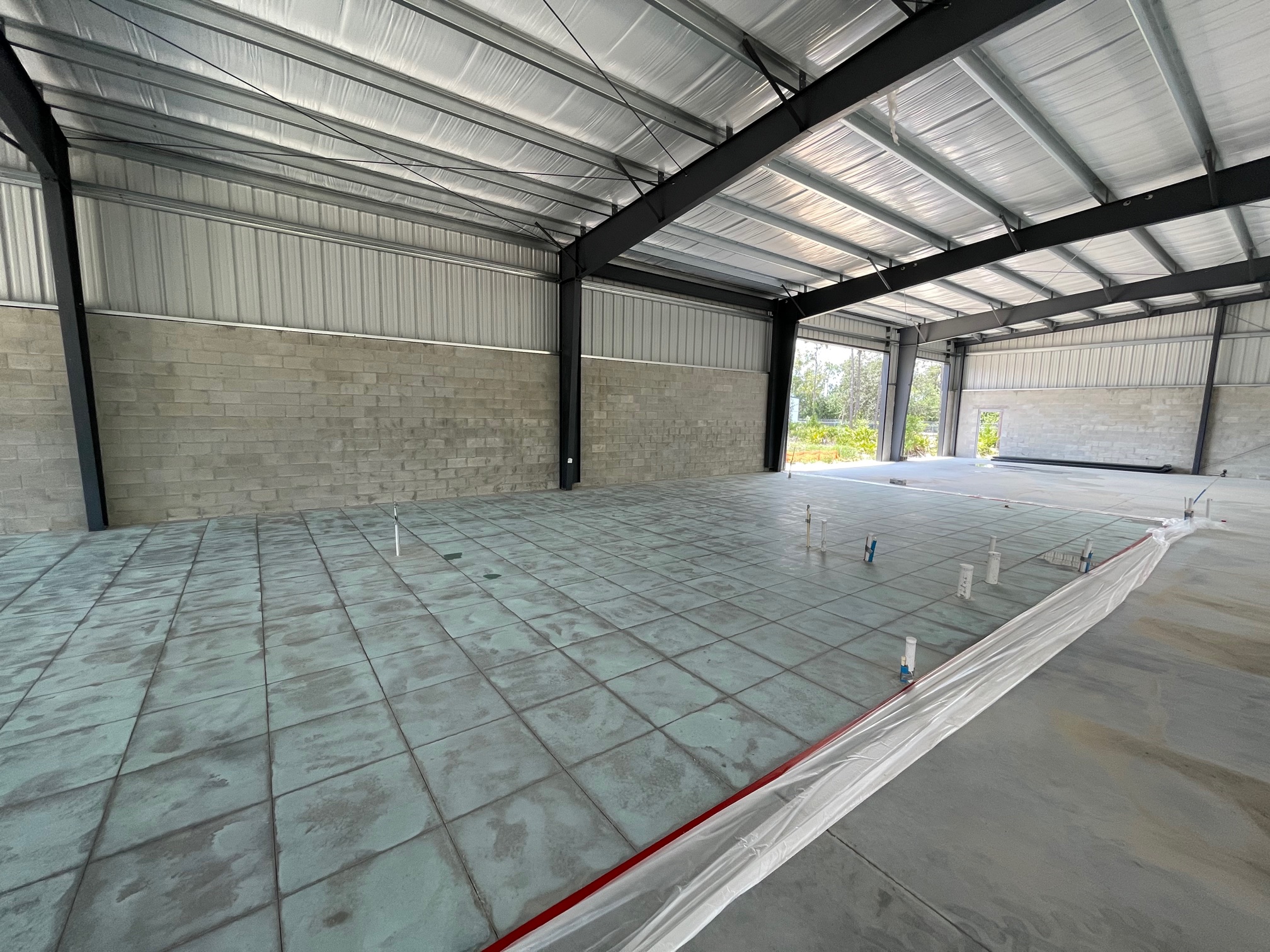
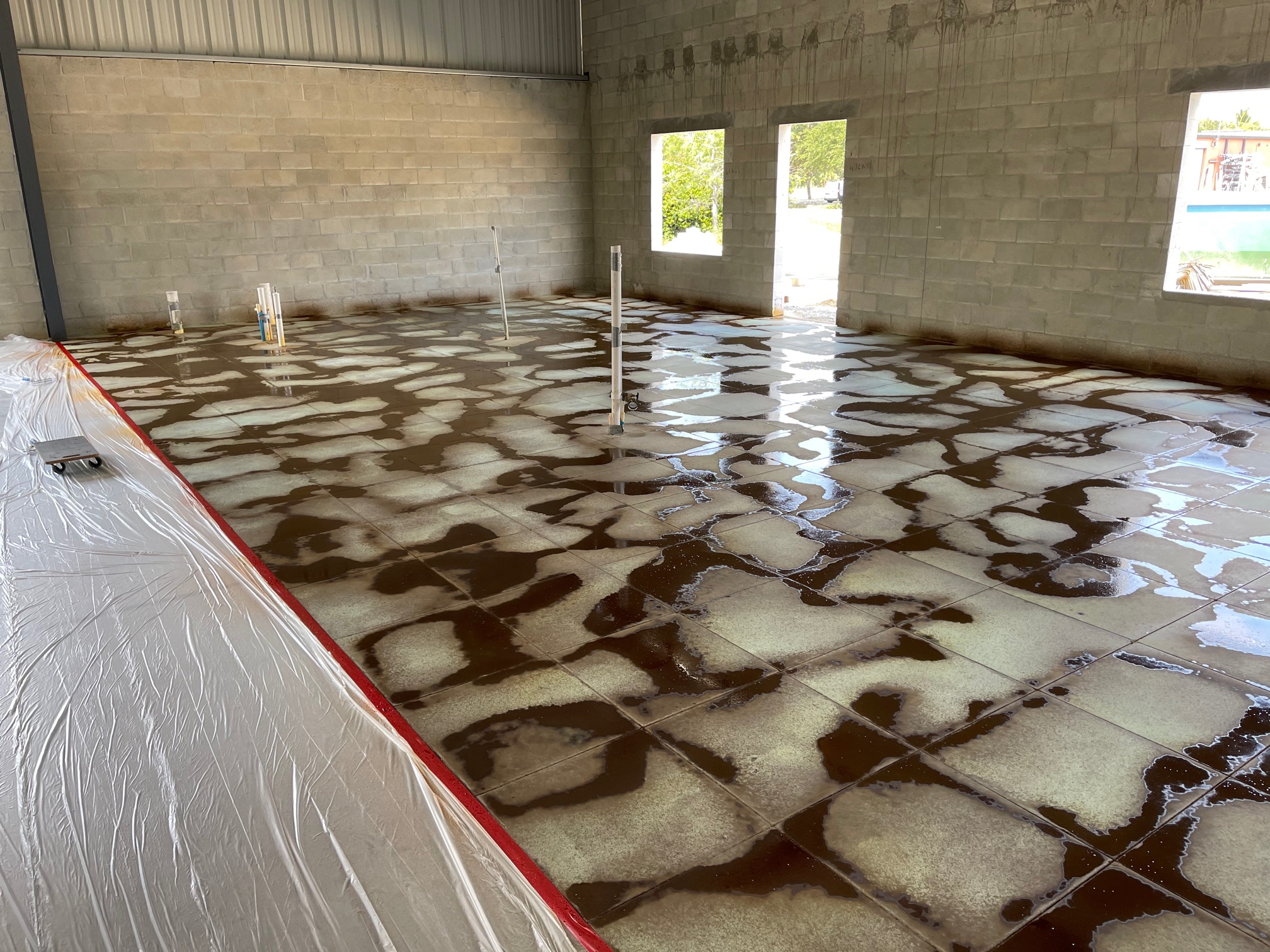
While some blending still occurs between light and dark hues, the wet-on-dry method is most often used to apply secondary layers of distinct color accents, where control of heavy, dark shades is essential. This technique is often used in conjunction with the acid stain veining technique, which involves applying multiple layers of acid stain in a way that creates a vein-like pattern on the surface. By carefully selecting the colors and layering them in a specific way, you can achieve a wide range of looks and effects with the wet on dry layering technique.

See the transformation for yourself and learn more about how the wet on dry layering technique was used to create this stunning acid stain finish. You’ll get a detailed look at the process and see the results in before and after photos.
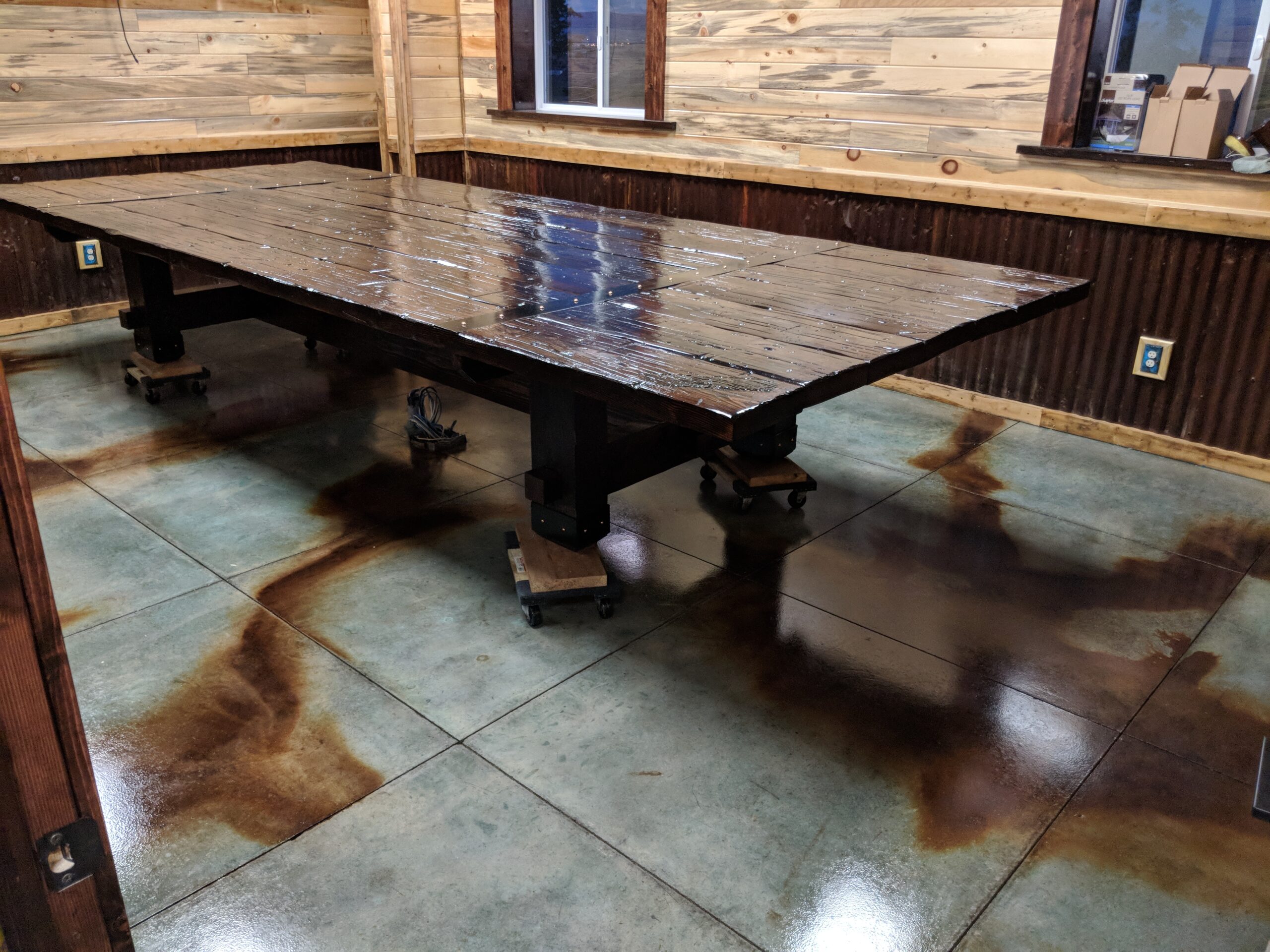
Since each successive layer provides a “new” dry canvas to work on, it’s a good idea to test your next color in a discreet portion of the concrete before applying it to the entire surface. This will allow you to preview how the stain will react with the lighter layer beneath and make any necessary adjustments to the color or application technique. This can help ensure that you achieve the desired result and avoid any unwanted surprises.
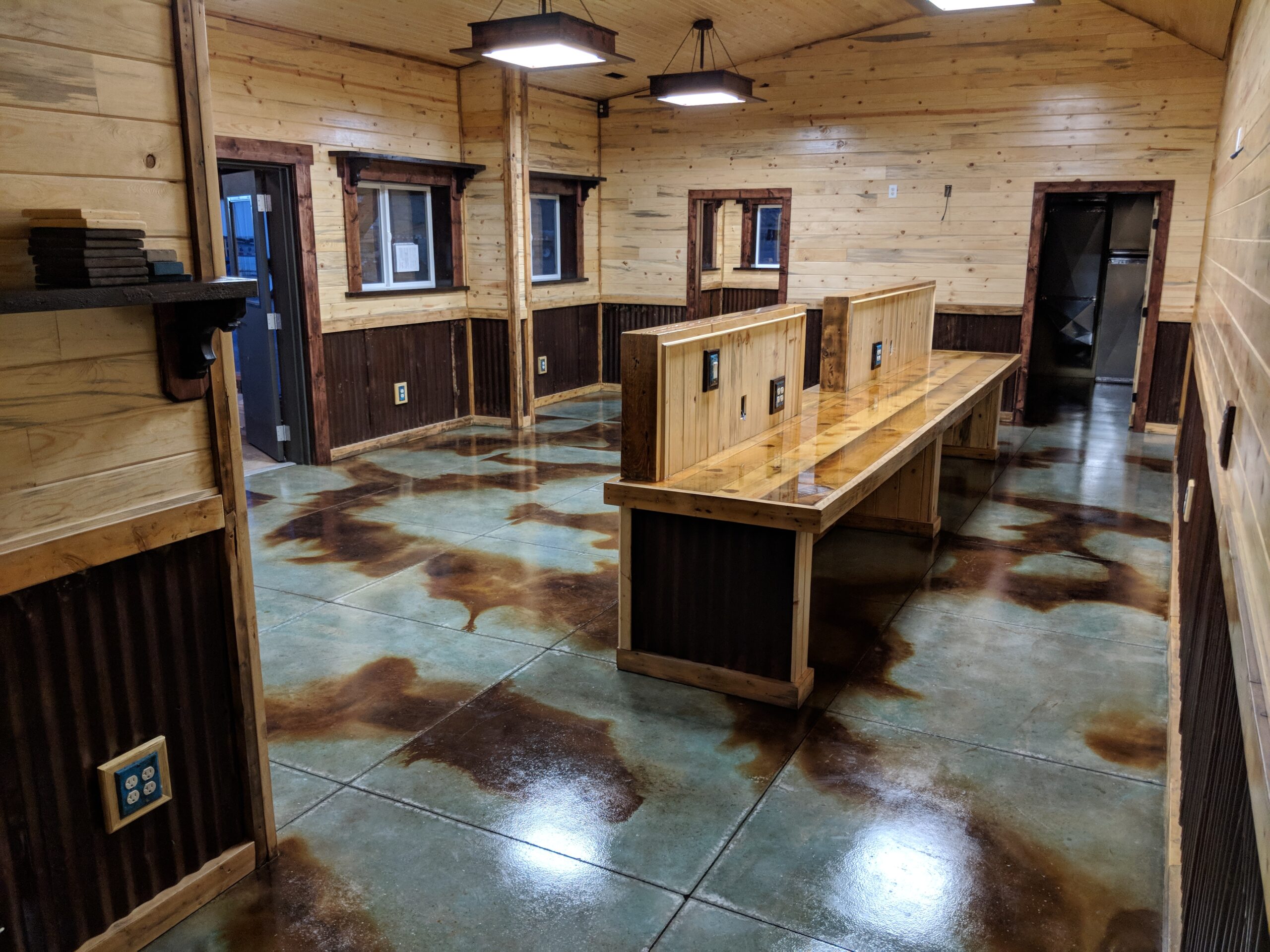
Bob Harris, a professional in the field, offers this tip for creating a smooth and seamless transition between colors when using the wet on dry layering technique:
“To soften the edge between the colors, apply water to the areas of the base coat that you want to retain, then spray the next layer of acid stain into the dry spots. This should just barely overlap the edges of the wet areas. The water helps to soften the hard edge, creating a very smooth and subtle transition between the colors.”

Both the wet on wet and wet on dry layering techniques have their own benefits and can be used to achieve a wide range of looks and effects. By carefully selecting your colors and experimenting with different layering and blending techniques, you can create stunning, one-of-a-kind surfaces with acid stain. Whether you’re looking to achieve a dreamy, “washed” appearance or a mottled, psychedelic finish, the possibilities are endless when it comes to layering acid stain colors on concrete.
Achieve Layered Effects with Colorwave Water Based Stain: An Alternative to Acid Staining
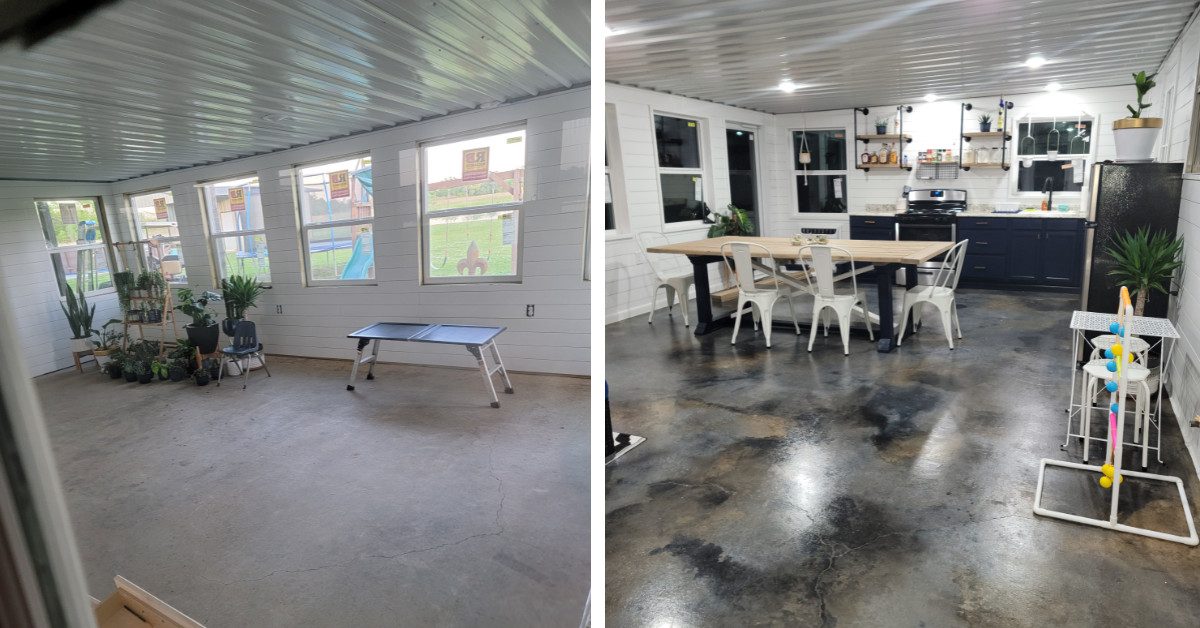
If you’re looking to achieve a layered effect on your concrete surface but prefer to avoid using acid stains, you may want to consider using colorwave water-based stains instead. These stains are similar to acid stains in that they can be applied in multiple layers to create a wide range of looks and effects, but they do not contain any acid and are therefore safer and easier to work with. Colorwave water-based stains are available in a variety of colors and can be mixed to create custom shades. They can also be applied using similar layering techniques as acid stains, such as wet on wet or wet on dry layering, to achieve a marbled or veined effect. If you’re looking for a more user-friendly alternative to acid staining, colorwave water-based stains may be worth considering for your project.
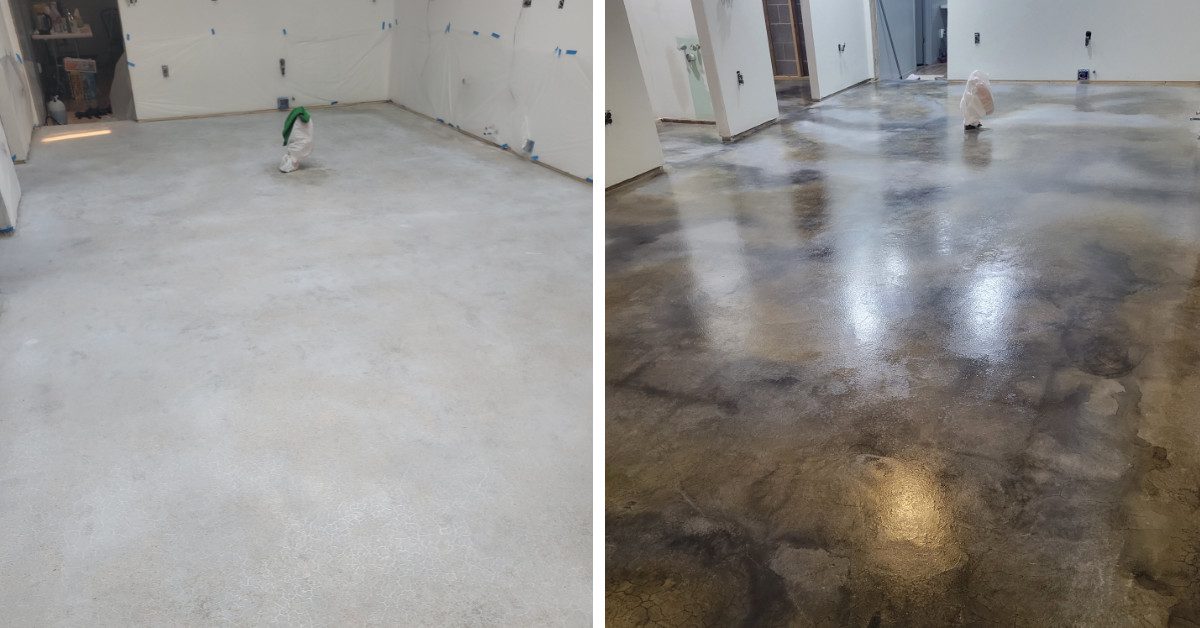
If you’re interested in using colorwave water-based stains for your project, be sure to check out our projects gallery to see examples of how they have been used by other customers. This can give you some ideas and inspiration for your own project and help you get a sense of the different looks and effects that are possible with colorwave stains.






